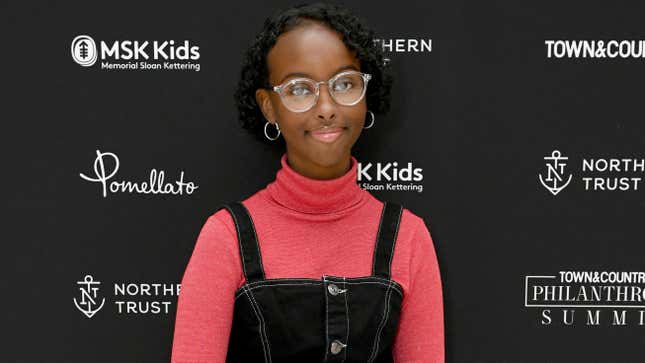
Teen activists from Johannesburg to Los Angeles are striking today to demand the world take action on climate change. Among the organizers is Isra Hirsi, co-founder of the U.S. Youth Climate Strike and daughter of Minnesota Congresswoman Ilhan Omar.
As Vice writes in a recent profile of the 16-year-old organizer, Isra helped launch the U.S. Youth Climate Strike the same month her mother took office. And though she feels like she came to climate issues “really really late in the game” (at the age of 15, she says), Isra is drawn to the issue for how it disproportionately affects communities of color. However, it is persistently framed as a “white [issue]” she noted.
White-led environmental groups helped contribute to that belief, she said. “[They’re] talking about how much they love grass and their lakes—I can’t connect with you on that.”
It wasn’t until the last year that her feelings began to change.
From Vice:
At the time, climate activism didn’t feel that important to her, relative to other issues—partially because it was never framed that way. “Gun control and climate change are [considered] white issues,” she said when I met with her in Minneapolis, “Black lives, police brutality, whatever, are not.”
It wasn’t until she joined a high school environmental club during her freshman year that she learned how, at its core, climate change affects communities of color the most. Black people, for example, are almost twice as likely as other residents to die during a heatwave in Los Angeles due to segregation and a lower likelihood of having access to air conditioners. And a 2018 report by the EPA found that people of color are much more likely to live in communities affected by environmental pollutants, as well as more likely to develop health complications as a result.
That climate change will impact the world’s most vulnerable communities first is well-established; in the last two years, Hurricane Maria’s devastating path through Puerto Rico emphasized the specific challenges that arise when structural inequality and racism are met with natural disasters. But as The Root’s Jessica Moulite outlined in a 2017 series, climate change is already restructuring and displacing black communities without the presence of weather catastrophes.
Liberty City, a predominantly black neighborhood in Miami, has experienced a wave of gentrification in recent years in part due to climate concern. As Moulite writes:
Liberty City was the backdrop of the recent Oscar-winning film Moonlight,which showed the oftentimes harsh realities of growing up in the projects, while also humanizing the lived experiences of those in the community. The area’s current median income is little over $26,000.
Nonetheless, while Liberty City may be less fortunate in some areas, it is incredibly valuable in others, especially considering that it sits 10 feet above sea level. Compare that with Miami Beach, where the median income is $164,000 and is approximately 5 feet above sea level.
Recent polling has found American teens are frightened by climate change, but these concerns aren’t unique to the U.S.—and the global turnout in today’s Climate Strike speaks to that.
As The Guardian wrote Friday morning, “a small but noisy crowd” in Johannesburg congregated outside the Sasol building—Sasol is a “huge” energy and chemical company based in South Africa.
Tariro Banganayi, an 18-year-old student at Sacred Heart College told the paper, “It’s important that I lend my voice to this cause ... a lot of people who aren’t as privileged as I am don’t have the opportunity to speak out against these sorts of issues, who live where the air is unbreathable, where toxic waste is dumped in rivers, those people don’t have a voice to speak out.”
Isra’s goal for 2020 will be to put climate change on the forefront of the presidential candidates’ agendas, and on this front Isra has already experienced some notable wins and disappointments. As Vice writes, after speaking directly to Sens. Amy Klobuchar and Andrew Yang, she was able to get the candidates to agree to a climate change debate—however, the Democratic National Committee refused to host such a forum. But the young climate organizer’s efforts would bear fruit later, when CNN held a climate change-specific debate for the Democratic presidential candidates in September.
She stays motivated doing the work—and balancing the challenges that come with being hyper-visible—knowing that millions of her peers feel similarly mobilized to help save the planet.
As Isra recently told Essence, “knowing that I have the power to inspire so many other young black girls and so many other like Muslim girls within the movement… gives me the motivation and the joy to keep doing the work that I do.”
G/O Media is participating in Covering Climate Now, a global collaboration of more than 250 news outlets to strengthen coverage of the climate crisis. You can find out more details on the effort and other participants here.